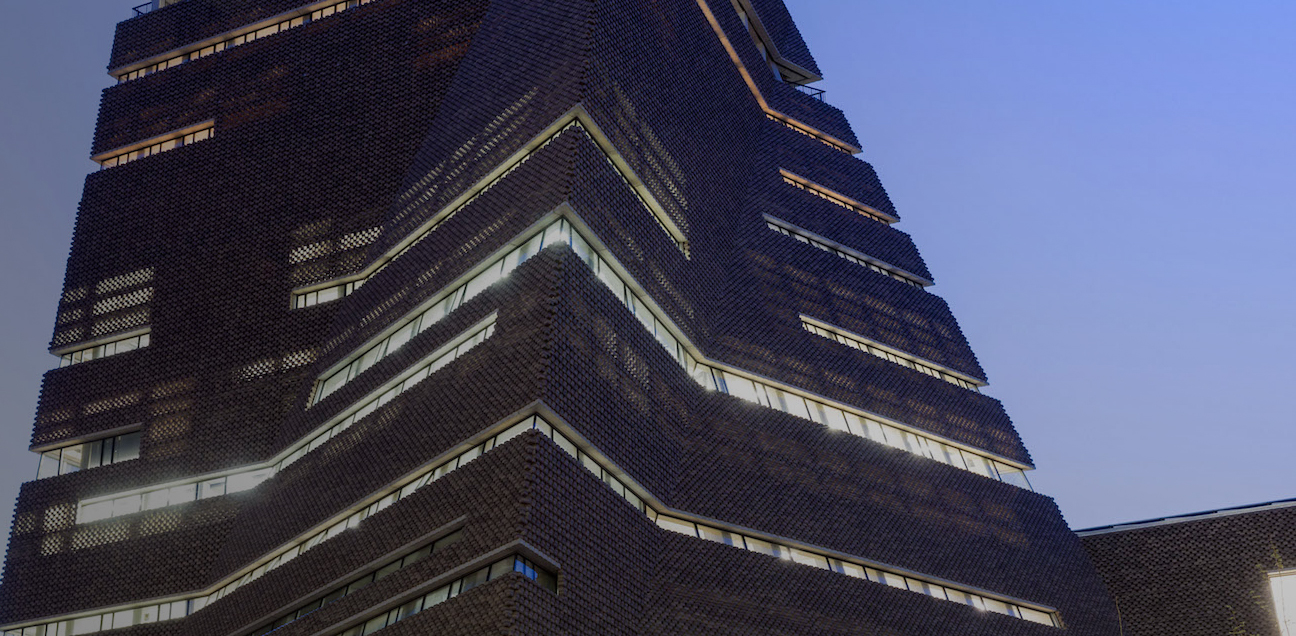Architects: Showcase your next project through Architizer and sign up for our inspirational newsletter.
VIA 57 West defies convention. Challenging the status-quo, the iconic skyscraper was designed by Bjarke Ingels Group as a new landmark in the skyline of lower Manhattan. Named the best skyscraper of the year by Emporis, the project’s “courtscraper” form combines the best qualities of a European perimeter block and a classic American skyscraper. BIG’s first major commission in the United States, VIA 57 West features a distinctive sloped façade and a series of terraces that look out over the Hudson River.
The tetrahedral design rises to 450 feet at its north-east corner while preserving adjacent views from Helena Tower to the river. The signature sloping roof was designed as a simple ruled surface that reflects a fishbone interior wall pattern. The building combines a communal garden area with apartments, resident lounges, a gym, fitness lounge and swimming pool. Exploring one of the world’s most iconic new buildings, we uncover the manufacturers and fabricators that made VIA 57 possible:
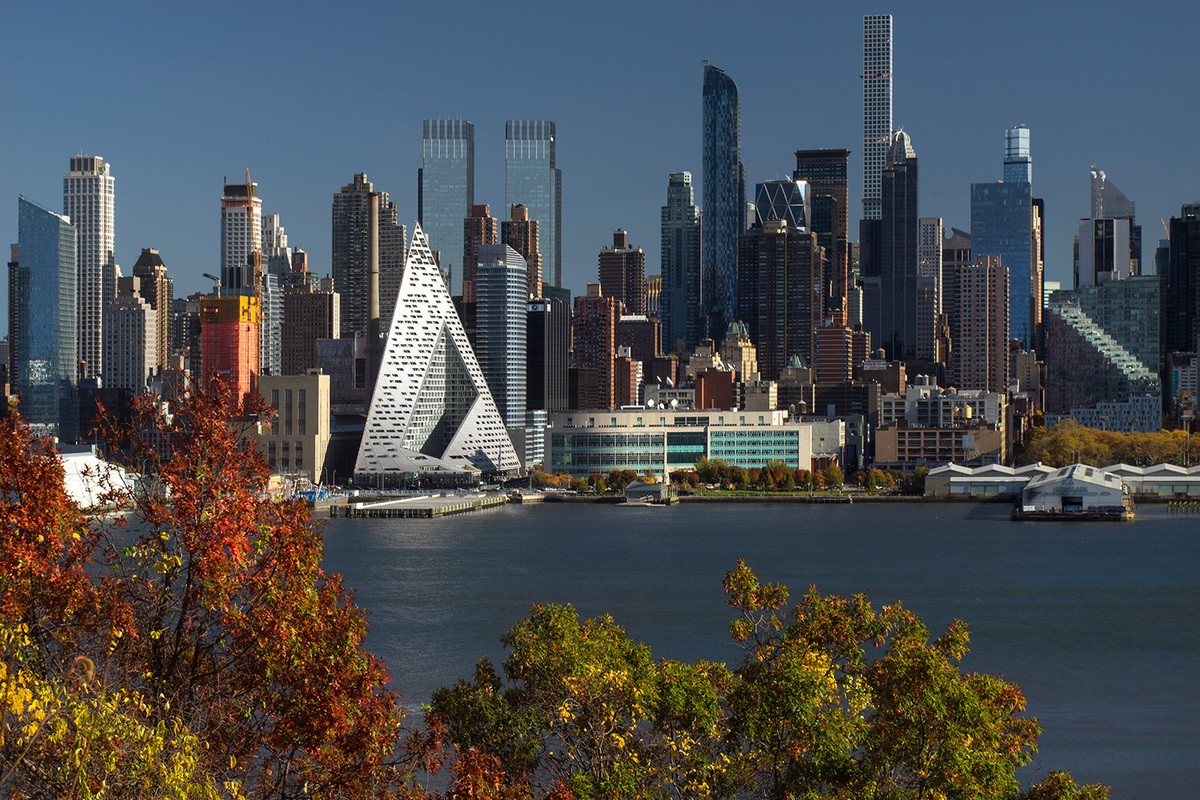
 Metal Façade Panels
Metal Façade Panels
Manufactured by Contrarian Metal Resources
To achieve the building’s hyperbolic paraboloid form, several façade systems were integrated together. While the north elevation features a fishbone patterned curtain wall, the south facing façade was designed with a unitized stainless steel sloped wall system. Over 1,200 prefabricated metal façade panels were formed, each five feet tall and spanning between 18 inches and 30 feet in height. The systems were created using laser metrology, a technology borrowed from the automotive industry.
The stainless steel façade was given a non-directional, sandblasted finish. This allowed optimal orientation when laser-cutting the panels to reduce waste. Each panel is unique, generated in Rhino and Grasshopper and assembled by Enclos in Virginia. The outer steel panels work as a rainscreen, shedding water in tandem with a network of gutters so that no drains penetrate the skin.
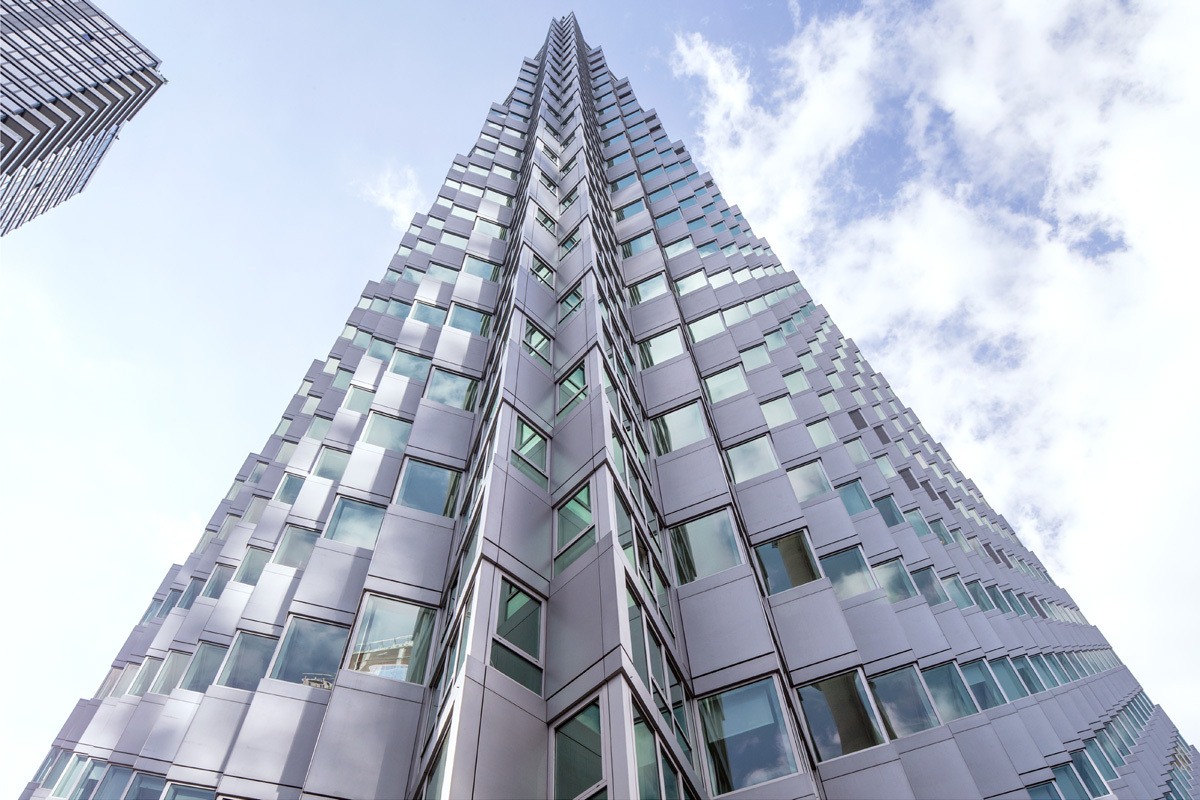
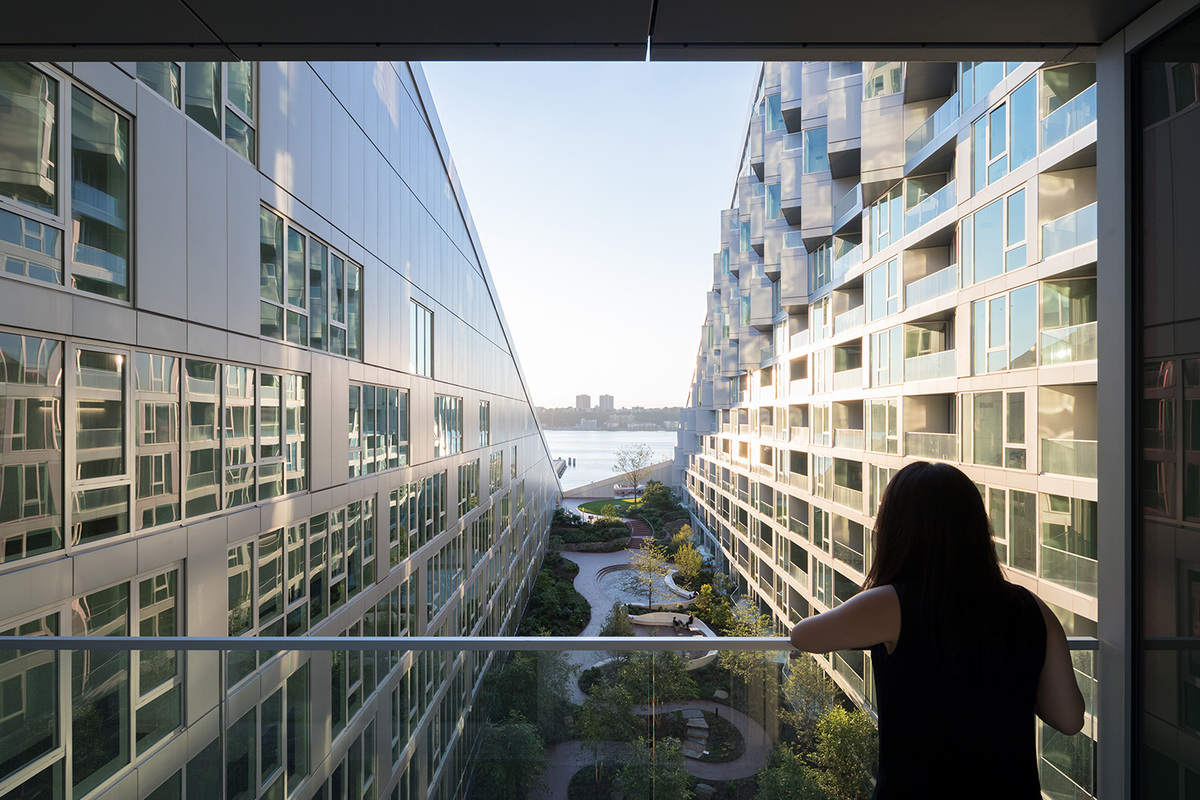 Glazing
Glazing
Manufactured by Vitro
VIA 57 was designed with over 350,000 square-feet of curtain wall and extruded aluminum window frames. The curtain wall was engineered and fabricated by Tecnoglass, and included Duranar Arcadia Silver coatings by PPG. The floor-to-ceiling windows are parted of an integrated energy management program built around a high-efficiency mechanical system, lighting occupancy sensors, and a hybrid water source heat pump.
Vitro’s Solarban 70XL glass was used throughout 5,000 window units to preserve views and minimize solar heat gain. Made with a triple-silver coating, the glazing blocks more than 70 percent of ambient solar energy. Working together, Tecnoglass, ENCLOS, Techniform and Bunting Architectural Metals created the curtain walls along the building envelope.

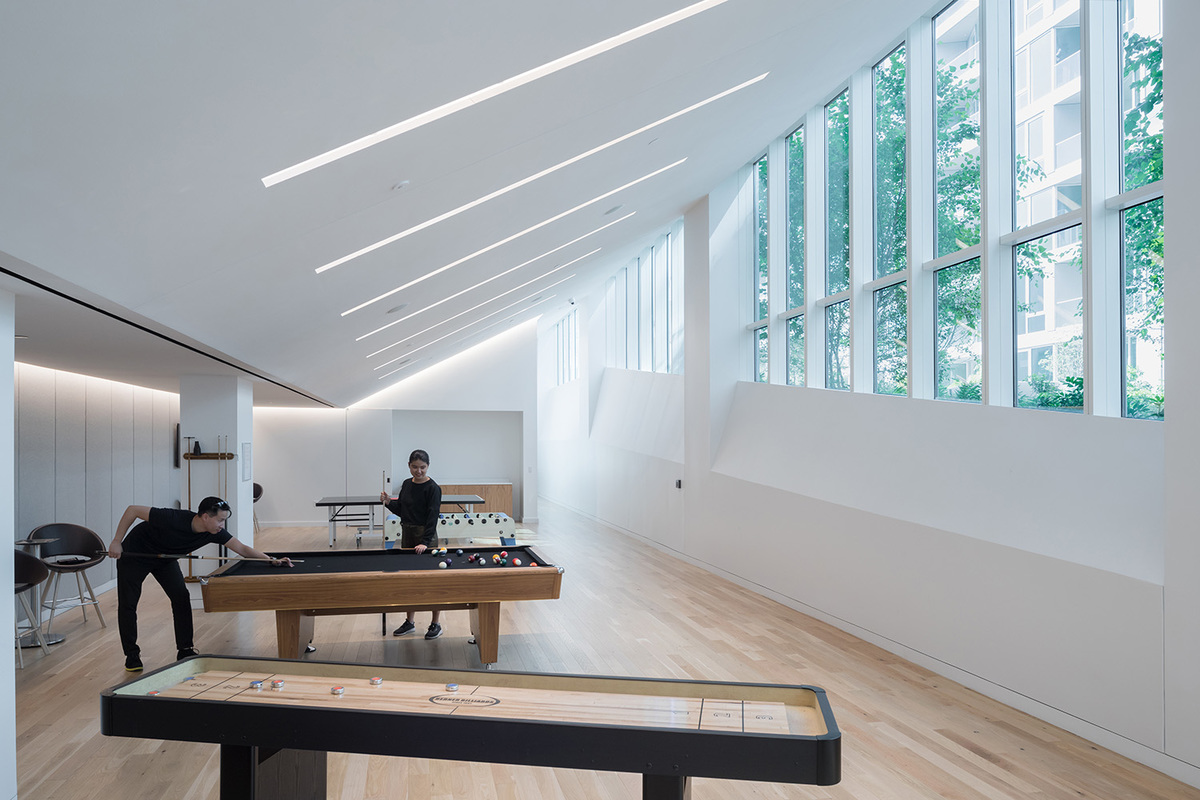 Woodwork
Woodwork
Manufactured by 9Wood and PGS Millwork
Built using responsibly forested wood, VIA 57 has a number of communal and private residential spaces that feature a range of woodwork. Expanding on the material concept for the building’s interior, the design is “Scandimerican” to reflect another layer of the European-American hybrid. Inspired by a combination of Scandinavian sensibility and local New York materials, the main materials in the apartment spaces are white-oak wood floors and cabinets.
In the communal lounge areas, 9Wood created a series of custom, suspended wood ceilings to bring warmth to the interior. These wood ceilings are made alongside millwork by PGS, covering a range of surfaces throughout the building. The linear ceilings are formed with narrow planks and reveals that create an inviting setting for socialization and gathering.
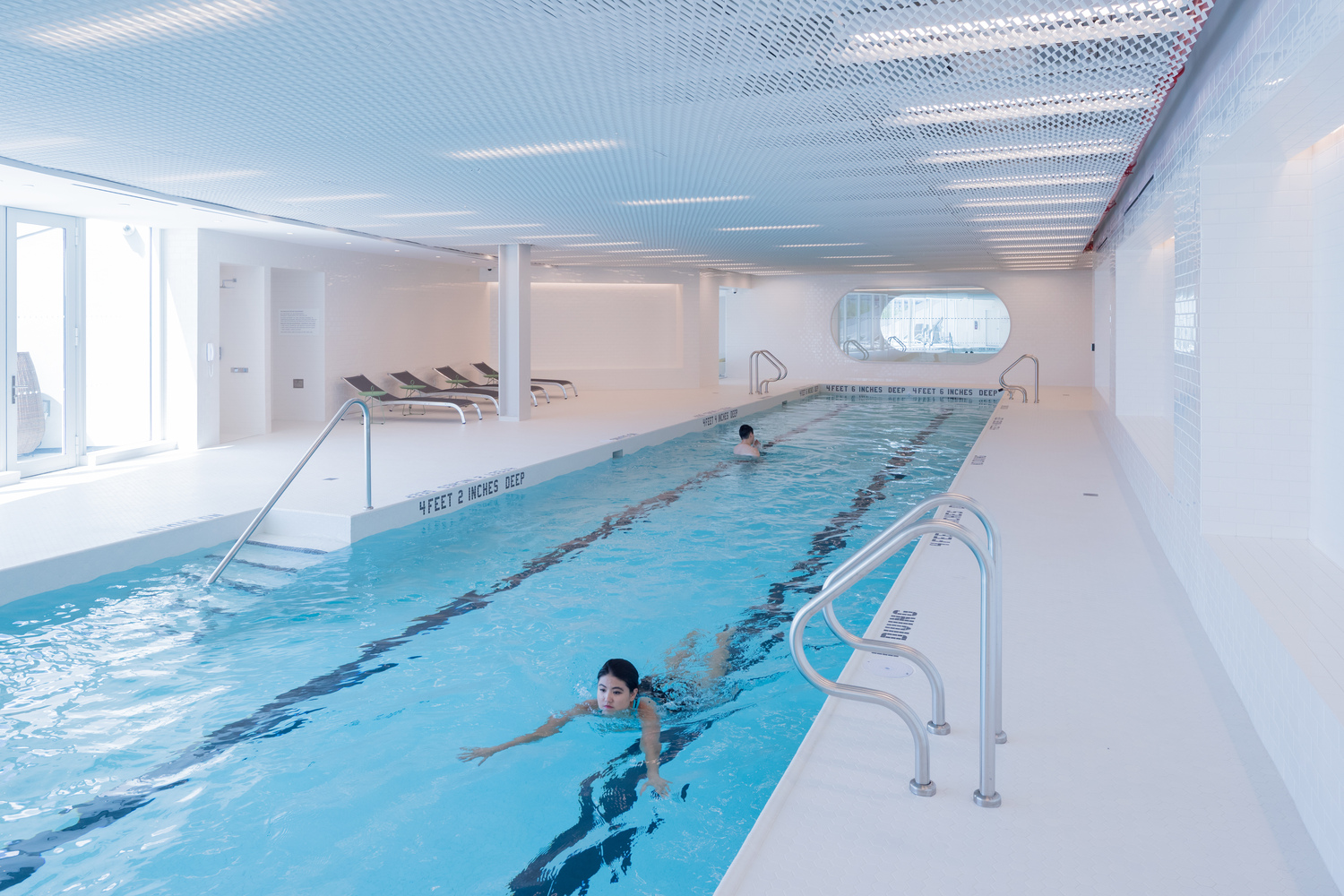
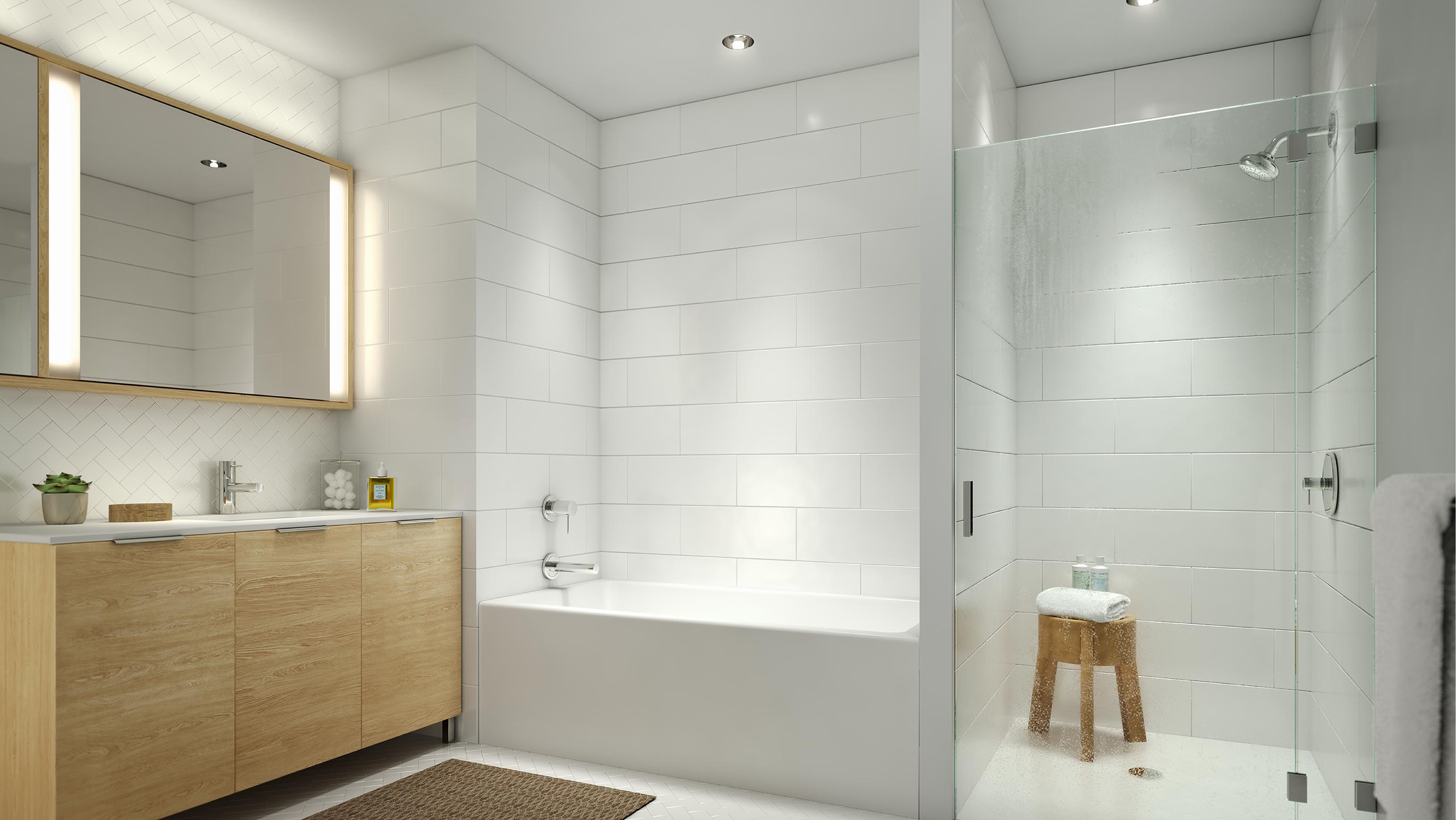 Tile
Tile
Manufactured by Creative Materials Corporation and Daltile
Over 80,000 sq feet of tile was used throughout the building. The porcelain tile features custom mesh mounts in a Herringbone pattern. It was provided by Creative Materials Corporation to build upon the idea of “Scandinavian sensibility” and work alongside the white-oak woodwork. Chosen for their durability, the tile sheet sizes were carefully created to balance speed and precision of installation alongside production efficiency.
Beyond the Herringbone pattern, Daltile created a series of surfaces for the indoor swimming pool. Their simple, subway-tile pattern can be found along the interior walls of the pool, while a hexagonal pattern is used along the floors. Both surfaces are made with white tiles that create a bright space to concentrate on laps.
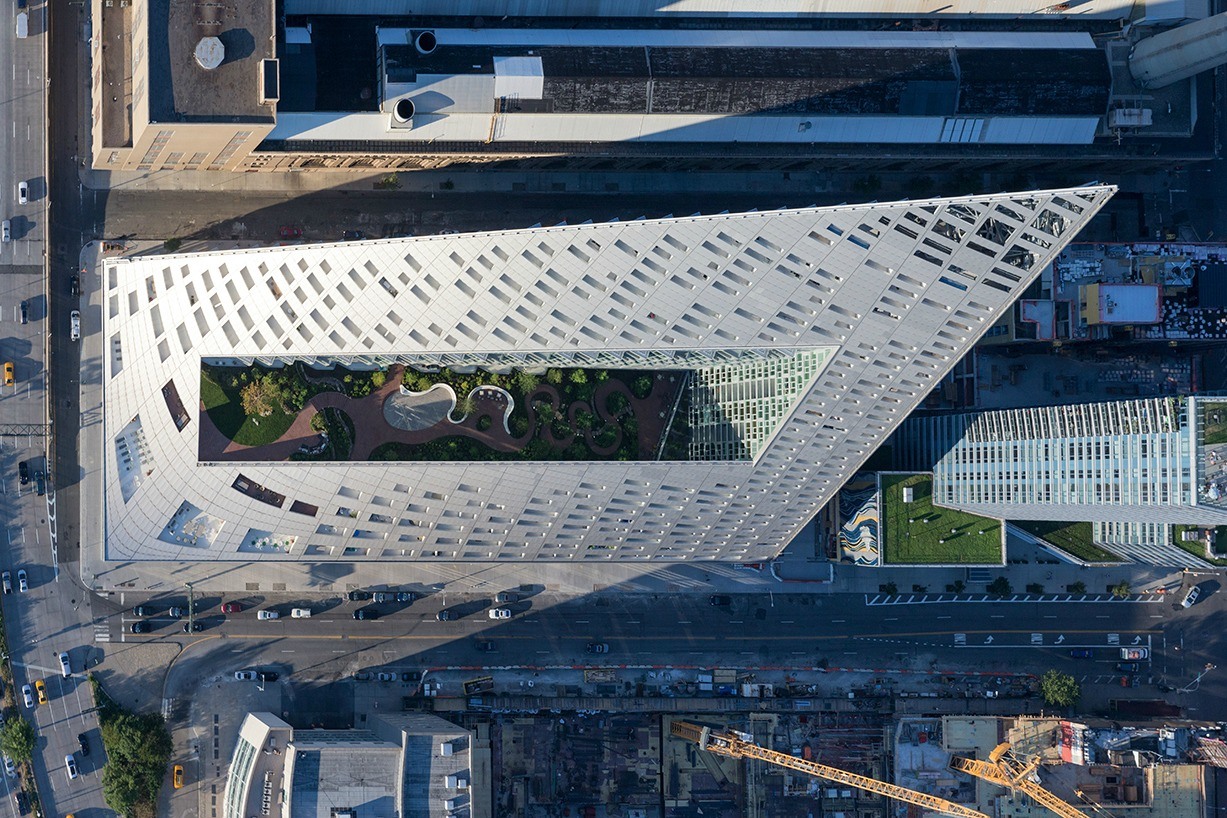
 Exterior Lighting
Exterior Lighting
Manufactured by Selux, BEGA and Delta Light
A range of ambient interior lighting and exterior lighting was chosen for the courtscraper. Roller shades and LED lighting can be found in amenity areas and residences, with occupancy sensors for lighting in shared spaces. Moving outside, a grand staircase connects to the central courtyard on the third floor that echoes the proportions of Central Park.
Creating a mini-ecosystem in the building’s interior, the project’s court is an urban oasis inspired by Copenhagen. A series of exterior lighting follows a redbrick path that guides visitors through plantings reflecting three landscape typologies native to the region, including a lowland birch grove, open forest glade, and a mountain overlook space. The latter features views of the Hudson River with lighting for barbecue stations and curving benches, as well as purpose-built chess tables.
Architects: Showcase your next project through Architizer and sign up for our inspirational newsletter.
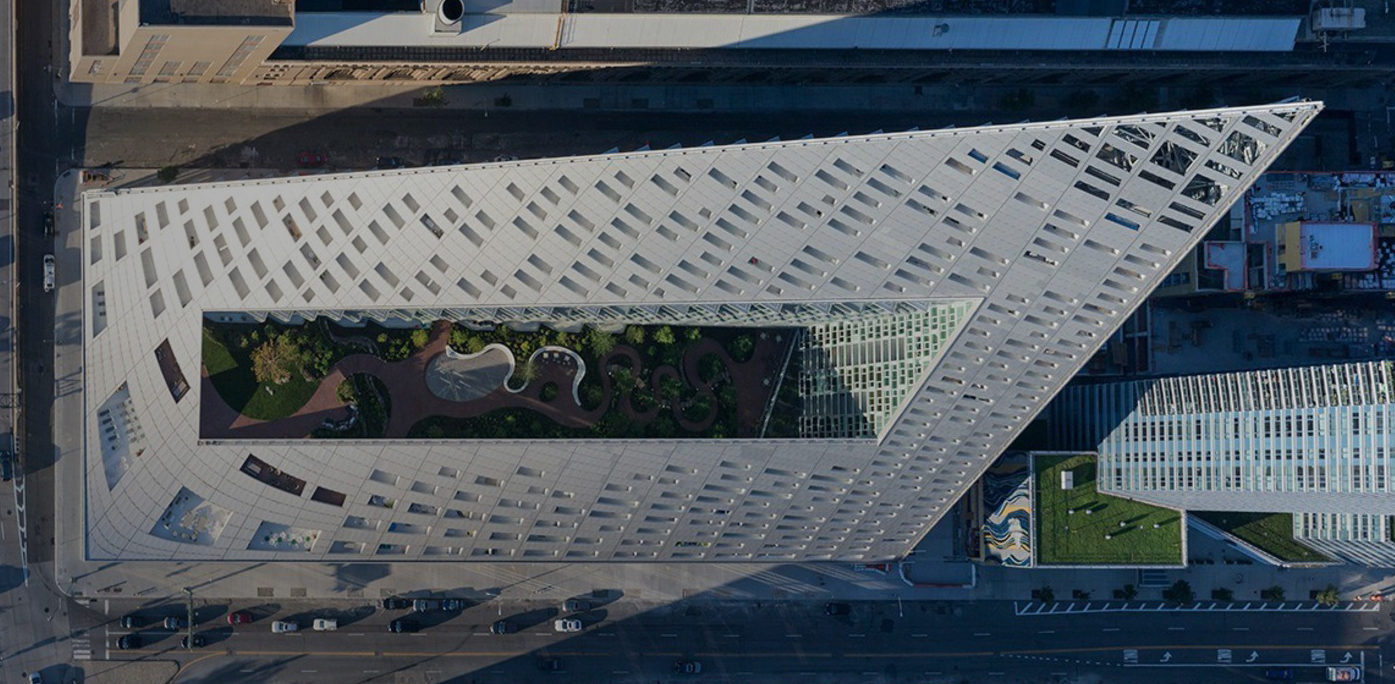





 Delta Light
Delta Light  VIA 57 West
VIA 57 West 